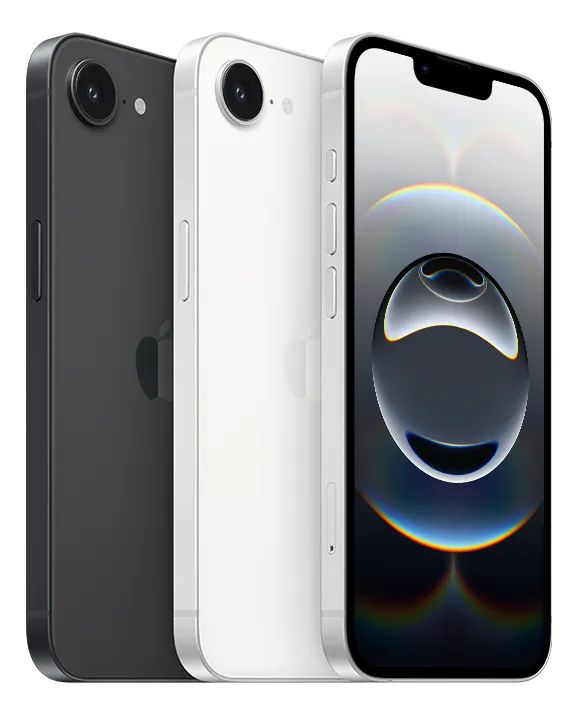


The Apple iPhone 16 enters the 2025 smartphone arena as a refined evolution of its predecessor, aiming to solidify Apple’s dominance in the premium smartphone market. With a sleek design, enhanced performance, and a camera system tailored for creators, the iPhone 16 promises a polished experience. After spending several weeks with the device, I’m impressed by its seamless integration of hardware and software, but how does it fare against rivals like the Samsung Galaxy S25 and Huawei Pura 80 Ultra? This comprehensive review dives into its specifications, performance, and whether it’s a smart investment in 2025.
|
Feature |
Specification |
|
Display |
6.1" Super Retina XDR OLED, 120Hz ProMotion, 2556 x 1179 pixels (~460 PPI), 2000 nits peak brightness |
|
Processor |
Apple A18 Bionic (3nm) |
|
RAM |
8 GB |
|
Storage |
128 GB / 256 GB / 512 GB (non-expandable) |
|
Main Camera |
Dual: 48MP (wide, f/1.6, 1.0µm, OIS), 12MP (ultrawide, f/2.2, 120° FOV) |
|
Selfie Camera |
12MP (wide, f/1.9) |
|
Battery |
~3561 mAh, 25W wired charging, 15W MagSafe wireless charging |
|
Operating System |
iOS 19 |
|
SIM Support |
Dual SIM (Nano-SIM and eSIM) |
|
Connectivity |
5G, Wi-Fi 7, Bluetooth 5.3, NFC, USB Type-C 3.2 Gen 2 |
|
Build & Design |
Aerospace-grade aluminum frame, Ceramic Shield front and back |
|
Dimensions & Weight |
146.7 x 71.5 x 7.8 mm, 174 g |
|
Audio |
Stereo speakers, Spatial Audio, no 3.5mm jack |
|
Colors |
Black Titanium, White Titanium, Natural Titanium, Desert Titanium |
Design
The iPhone 16 maintains Apple’s signature aesthetic with a sleek aerospace-grade aluminum frame and Ceramic Shield glass on both sides. At 174 grams, it’s noticeably lighter than competitors like the Huawei Pura 80 Ultra (233.5g), making it comfortable for one-handed use. The Natural Titanium finish feels luxurious and resists fingerprints better than glossy alternatives. The IP68 rating ensures durability against dust and water, and the flat edges enhance grip compared to older curved designs. The new customizable Action Button adds versatility, letting users assign shortcuts like launching the camera or activating Focus modes.
Display
The 6.1-inch Super Retina XDR OLED display is a standout, now featuring ProMotion with a 120Hz adaptive refresh rate—a feature previously exclusive to Pro models. With a peak brightness of 2000 nits, it performs admirably in direct sunlight, though it falls short of the Huawei Pura 80 Ultra’s 3000 nits. Colors are vibrant, and the HDR performance elevates streaming and gaming experiences. The display’s 460 PPI ensures crisp text and visuals, rivaling the Samsung Galaxy S25’s AMOLED panel.
Camera Configuration
The iPhone 16’s dual-camera system includes a 48MP wide sensor with an f/1.6 aperture and a 12MP ultrawide with a 120° field of view. The main camera excels in daylight, capturing sharp details and accurate colors. In low-light conditions, it outperforms the iPhone 15, thanks to improved computational photography and a larger sensor. However, compared to the Huawei Pura 80 Ultra’s 50MP 1-inch sensor and dual telephoto system, the iPhone 16 lacks optical zoom versatility, relying on digital zoom up to 5x, which shows some quality loss. The 12MP selfie camera delivers natural skin tones and supports 4K video with Cinematic Mode, ideal for vloggers. Video recording remains a strong suit, with 4K 60fps, ProRes, and Spatial Video for Apple Vision Pro, offering gimbal-like stabilization.
Charging and Battery Life
The iPhone 16’s ~3561 mAh battery is smaller than competitors like the Huawei Pura 80 Ultra (5170 mAh global). However, iOS 19’s optimization ensures all-day battery life under moderate use, such as browsing, streaming, and light gaming. Heavy users may need a top-up by evening. The 25W wired charging is slower than the Pura 80 Ultra’s 100W, taking about 90 minutes for a full charge. MagSafe wireless charging at 15W is convenient but lags behind the 80W wireless speeds of Huawei’s flagship. The lack of a charger in the box remains a drawback for some.
Performance
Powered by the A18 Bionic chip (3nm), the iPhone 16 delivers blazing-fast performance, scoring higher than the Huawei Pura 80 Ultra’s Kirin 9020 on benchmarks like AnTuTu (~1.5M vs. ~1.26M). It handles multitasking, 4K video editing, and demanding games like Genshin Impact without stuttering. The 8GB RAM is sufficient for most users, though it’s half of the Pura 80 Ultra’s 16GB. The Neural Engine enhances AI-driven features like real-time photo processing and Siri improvements, making the iPhone 16 feel snappy and future-proof.
Software Experience
iOS 19 is polished and intuitive, with new customization options for the home screen and Control Center. Features like Live Text, Visual Look Up, and enhanced privacy controls (e.g., App Privacy Reports) add value. Unlike the Huawei Pura 80 Ultra, which lacks Google Mobile Services on its global EMUI version, the iPhone 16 offers seamless access to the App Store and iCloud. Apple’s commitment to long-term software updates ensures the device remains relevant through 2030, a significant advantage over Android competitors with shorter support cycles.
So, is it worth the cash? If you’re deep in the Apple ecosystem or your phones on its last legs, yeah, go for it. If you’ve got an iPhone 15, maybe chill unless you’re chasing the latest and greatest. Apple’s still king of polish, but the competition’s catching up fast.
The overall rating is based on reviews by our experts
No reviews yet
|
How Is the Design? |
|
|
How is the Display? |
|
|
How is the Camera? |
|
|
How are the Features? |
|
|
How is the Connectivity |
|
|
How is the Usability? |
|
|
How is the Performance? |
|
|
How is the Battery Life? |
No prices available